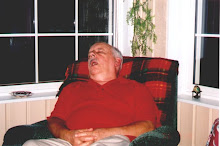Browsing through the used book store a few weeks ago, I happened on a copy of The Scarlet Pimpernel. I had heard the name over the years but never knew who or what it was. I imagined it could be a person of questionable reputation, perhaps a spy of some sort. Perhaps it was a story akin to The Three Musketeers. I thought of it as a literary classic of the 18th or 19th century. Wrong on all counts!!!
The book itself was classy. Hard cover, 8½" x 5¾", one inch thick, 256 pages, quality cloth binding, with a red ribbon bookmark sewn into the binding, a nice touch. Published by International Collectors Library, Garden City, New York. I was impressed. So much for the hardware. The software was something else again, which I'll get to in a moment.
Driving home with my treasure, it occurred to me that I didn't know who the author was. I was sure it wasn't Dumas, or Hugo or Zola. Why was I thinking of French authors? It was Baroness Emma Orczy, 1865-1947.
Baroness Orczy? Who? Full name: Emmuska Magdolna Rozália Mária Jozefa Borbála Orczy de Orczy. She left Hungary as a child in order to flee a peasant rebellion and eventually settled in London with her parents. Check out Wikipedia if you want more, which you probably don't. The Scarlet Pimpernel was her only claim to fame, as far as I can tell, and it can hardly be classed as great literature. The hero of her tale, published in 1902, is perhaps the 20th century's first superhero, although the action takes place in 1792 during the Terror in Paris.
Sir Percy Blakeney of London high society is secretly the Scarlet Pimpernel, whose mission in life is to secret to England the nobles of France who face the guillotine if apprehended. He is a master of disguise, deceit and cute tricks, and he has about 20 cohorts who form the league of the Scarlet Pimpernel, but he is the master. He pretends to be a simpleton so as to allay suspicion, his peers laugh at him behind his back and when he always wins at poker, it is attributed to idiot's luck. Although he is a tall and muscular man, he manages to disguise himself as an old hag who sits beneath the guillotine knitting, counting the heads as they fall. (The good Baroness read Dickens, of course.) When the fun is over, "she" drives her market cart through the gates of Paris with a couple of nobles hidden among the turnips. The guards keep their distance because the old hag has let it be known that there is plague in her village. There is the usual sacré bleu and curses when it is realized that Scarlet Pimpernel has struck again. And so it goes, you get the idea. He generally leaves his mark as a hand drawn little red flower, which is what a scarlet pimpernel actually is. Who was that masked man?
Meanwhile, back at the ranch, his beautiful wife Margaret is scornful of him and wonders what she ever saw in this simpleton with the idiotic laugh, the butt of jokes. Later in the novel, when she finally figures out who he really is, we get the Harlequin Romance part of the story when her love returns in full bloom.
The tale doesn't hang together very well. Prior to 1792, did he always act the simpleton, anticipating the Terror? If so, why did he not rescue his charges a lot sooner? Why did he rescue only the nobles? The baroness has a lot to answer for.
The 20th century has been full of superheroes. Don Diego de la Vega, the son of a wealthy landowner in Spanish California, is actually Zorro who first appeared in 1919. This hero rode forth to right wrongs and rescue fair dansels; he could slice open your shirtfront in the form of a Z without drawing blood. In order to allay suspicion he acted spoiled and effeminate. "Oh father", he complained, "my bathwater was positively tepid!" Superman appeared in the comics in 1932. I remember one strip where two Streamliner passenger trains were heading toward each other on the same track at full speed. When they closed within six feet, Superman flew in, spread his arms and stopped both trains, saving countless lives. It didn't occur to most readers that hitting the other train or Superman would amount to the same thing. It's the sudden deceleration, stupid.
Bruce Wayne, wealthy industrialist, playboy and philanthropist, was secretly Batman, a 1939 creation. Then there was Captain Marvel in a red suit, Cpt. Marvel Jr. in a blue suit, Mary Marvel in red, Wonder Woman, the Green Hornet and on and on. All these many heroes made the world safe for democracy, I suppose, but didn't get around to stopping any of the wars.
I'll leave it to the sociologists to explain the significance of superheroes.


0 Comments:
Post a Comment
<< Home